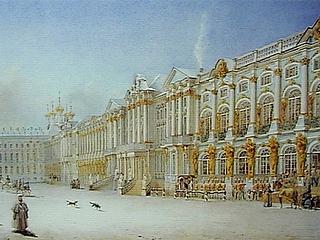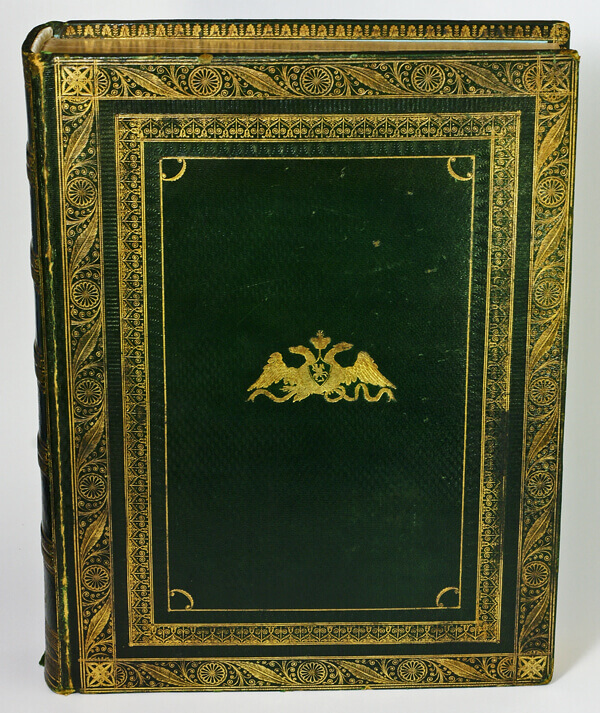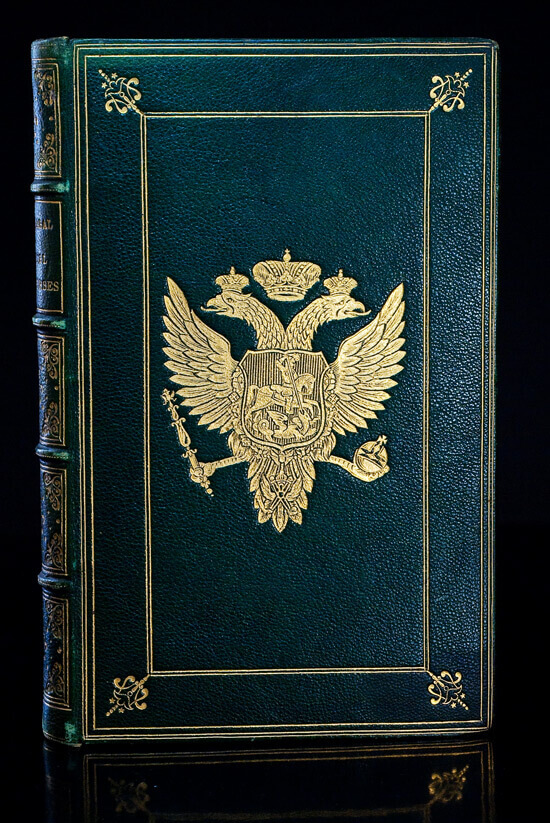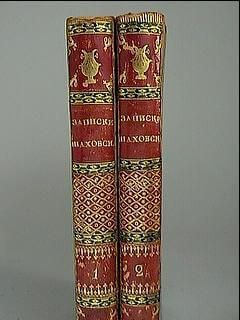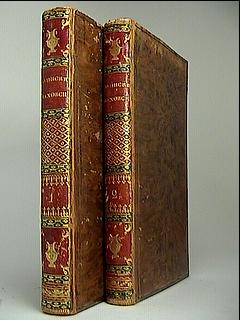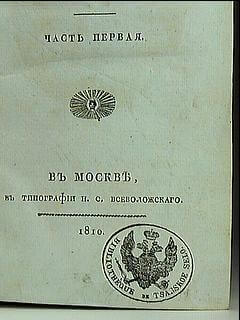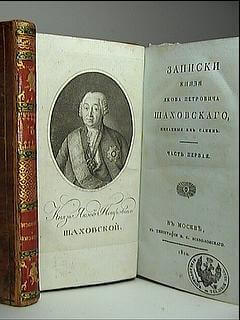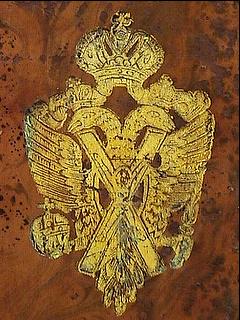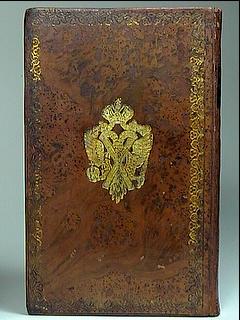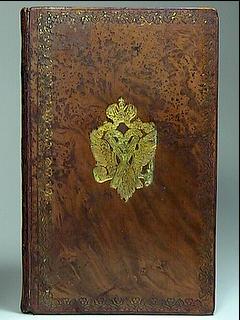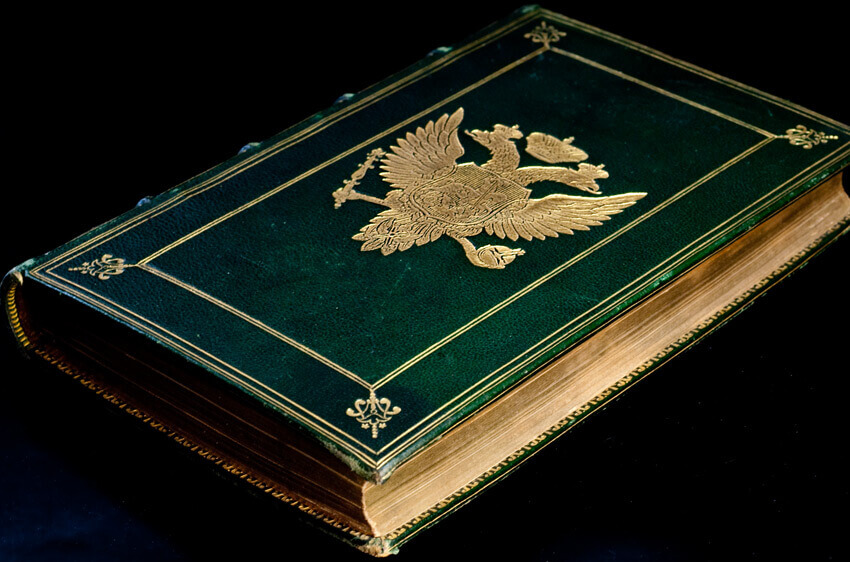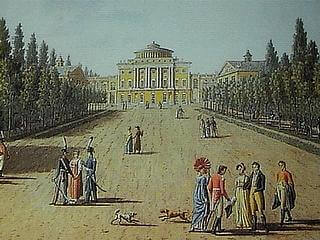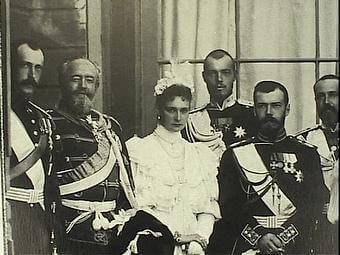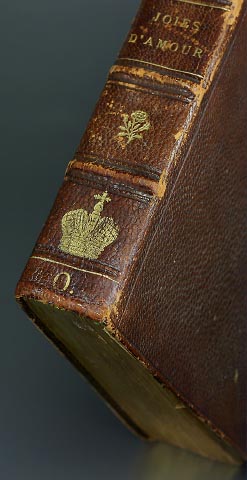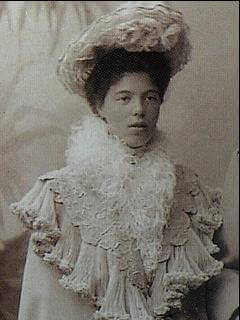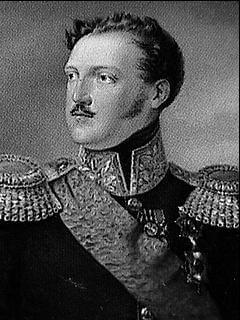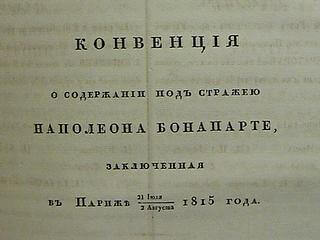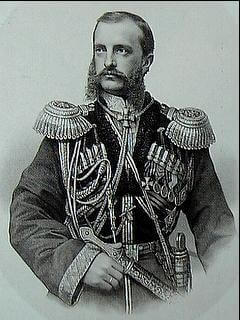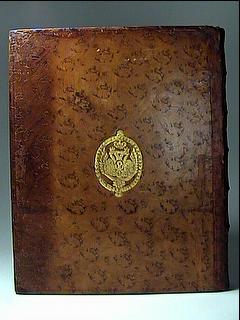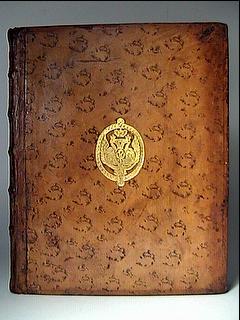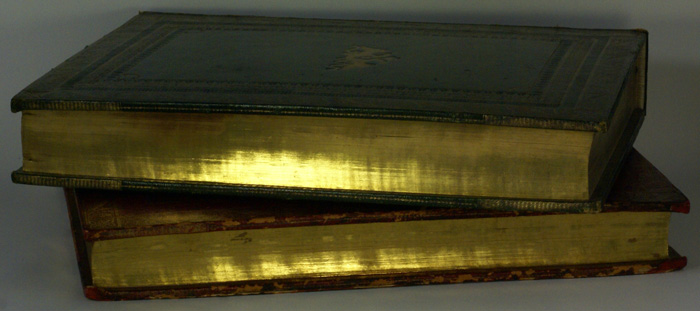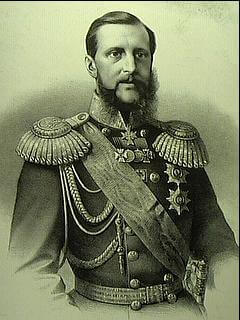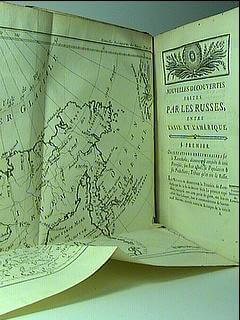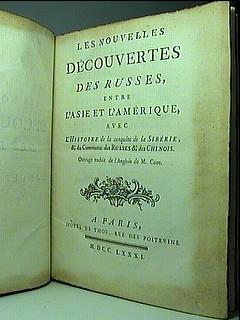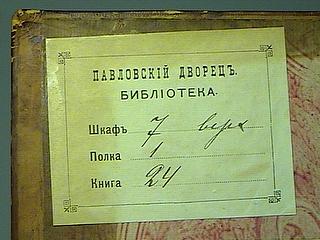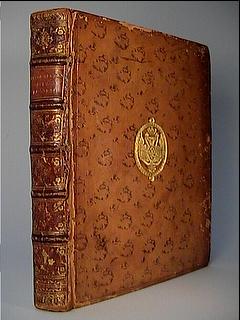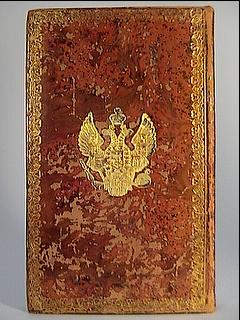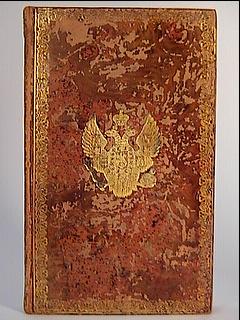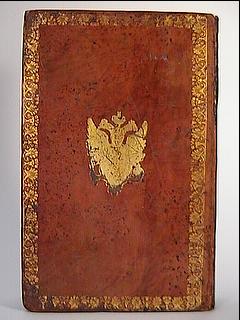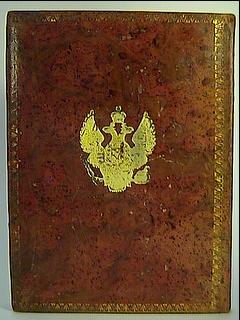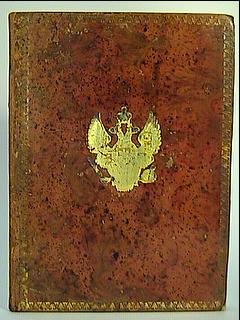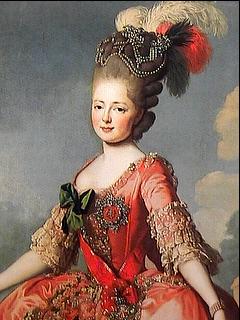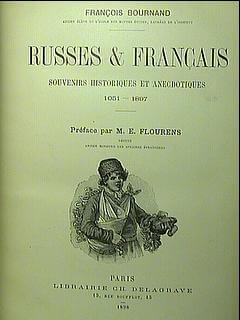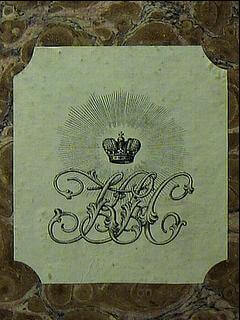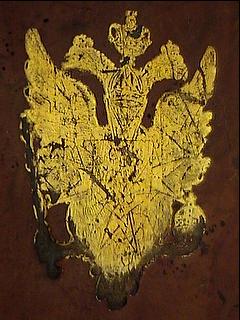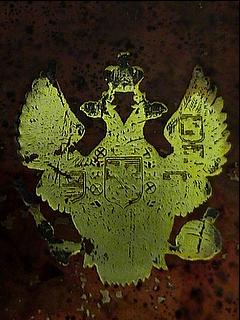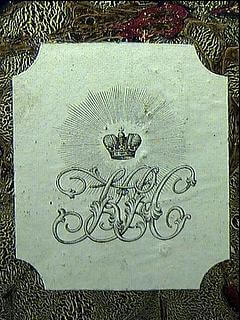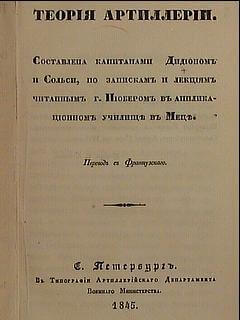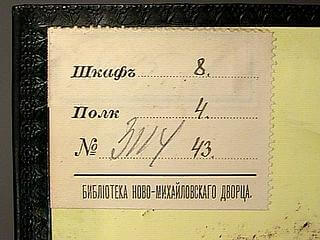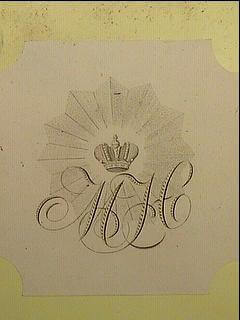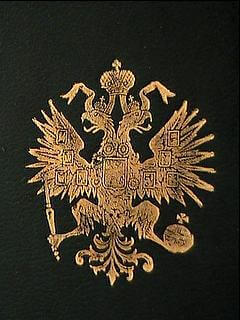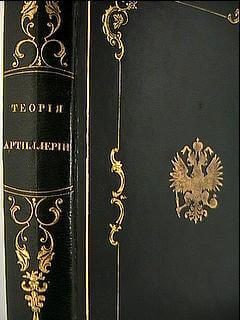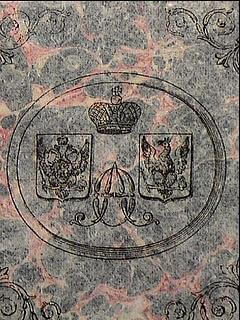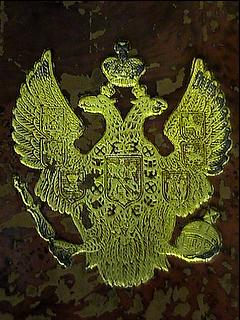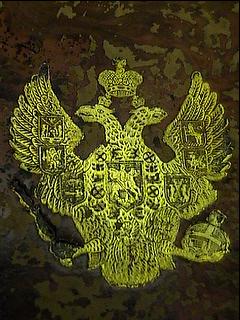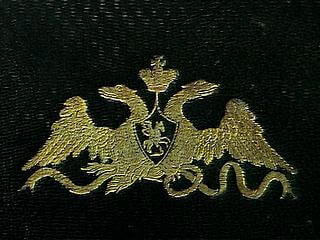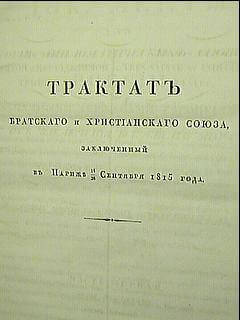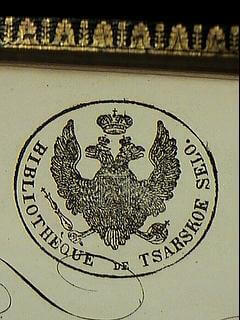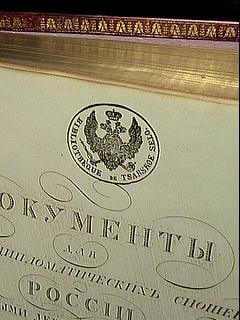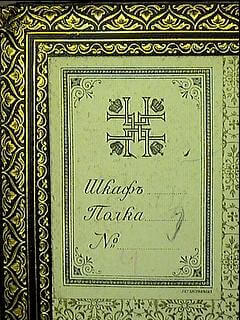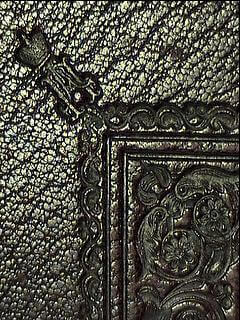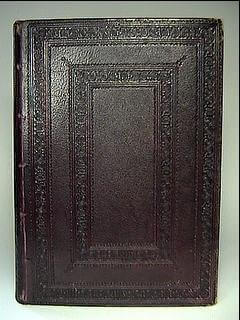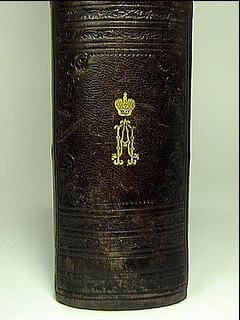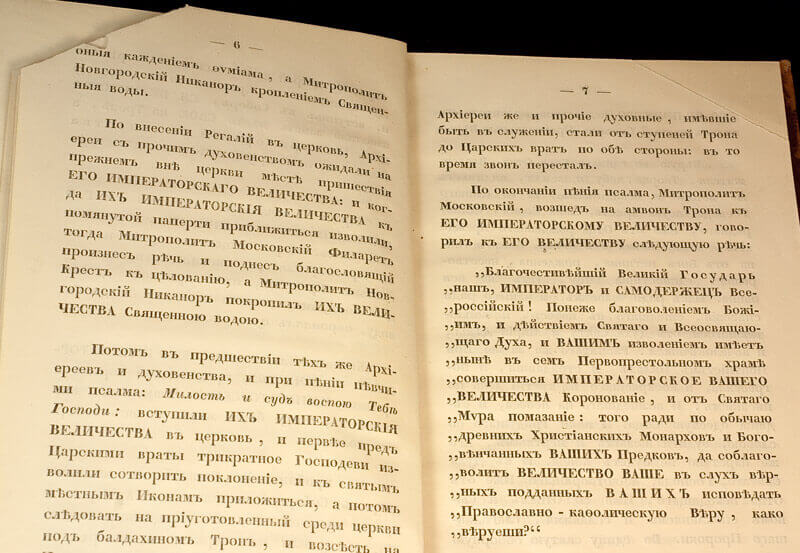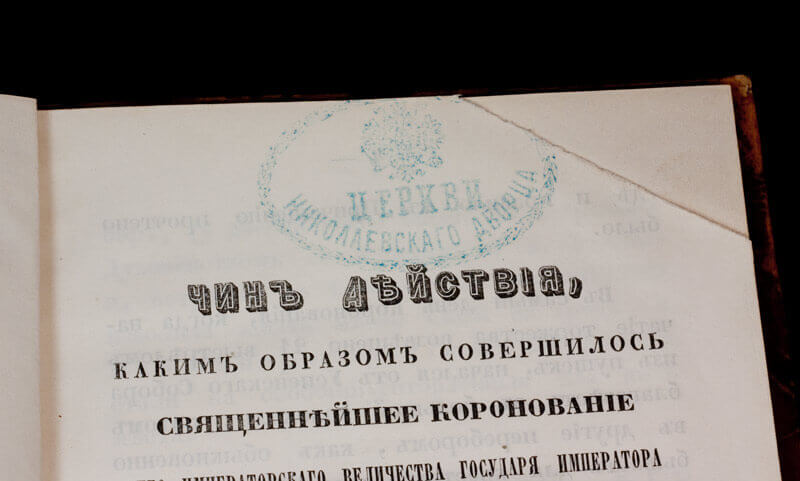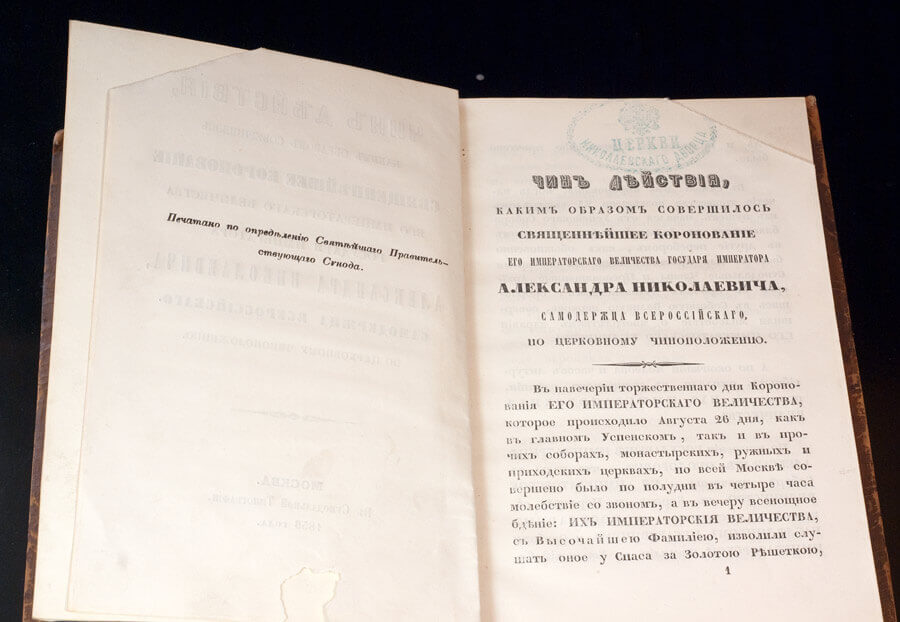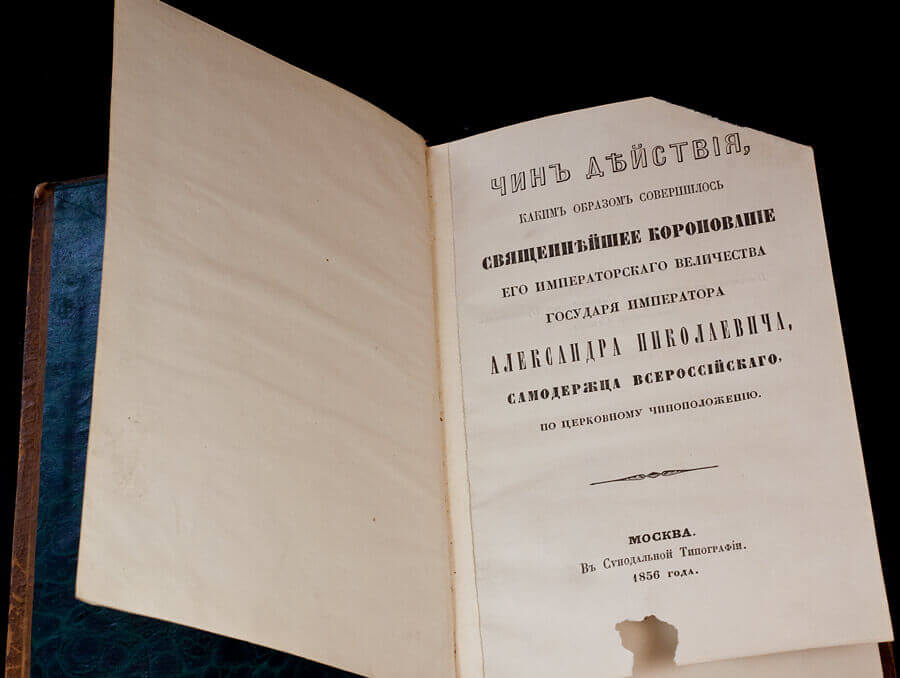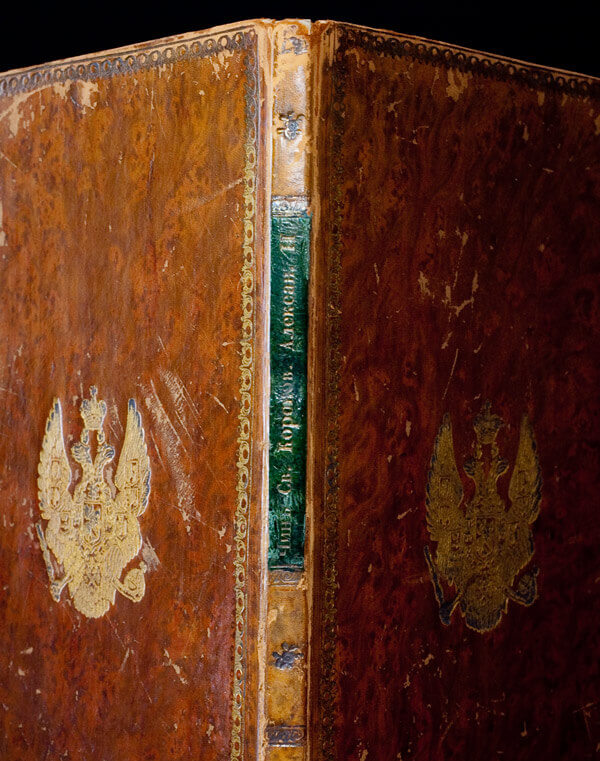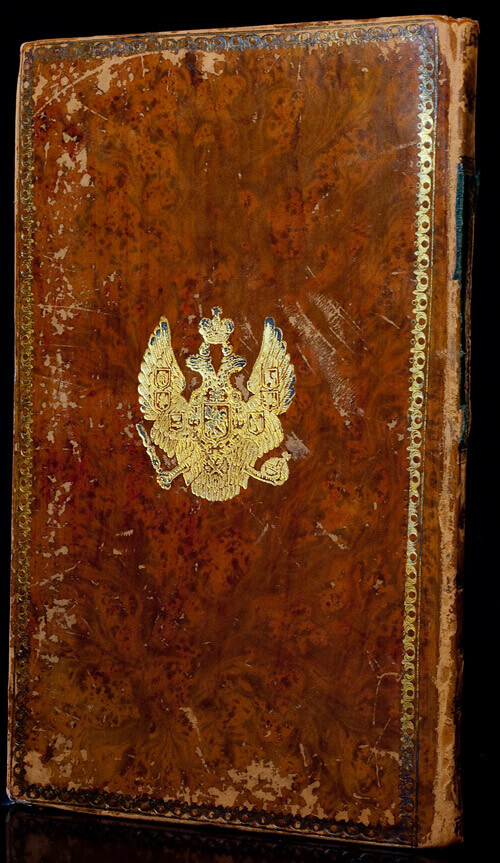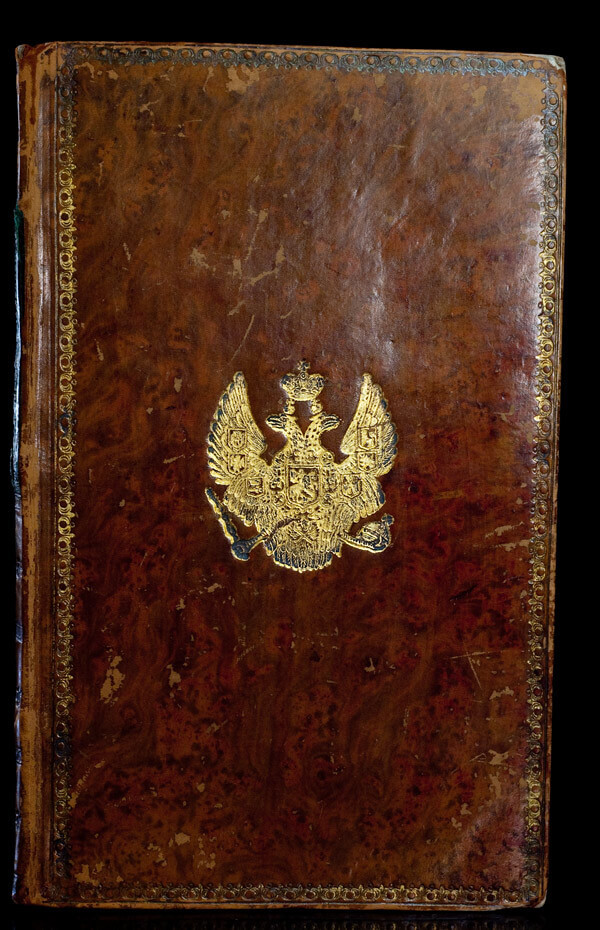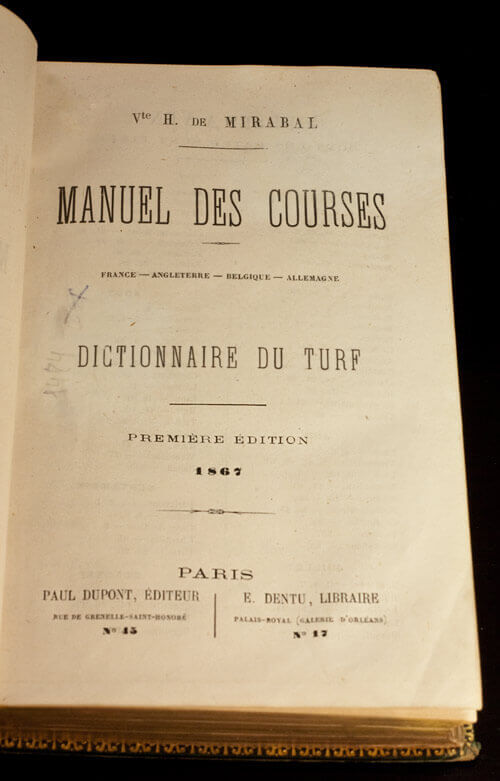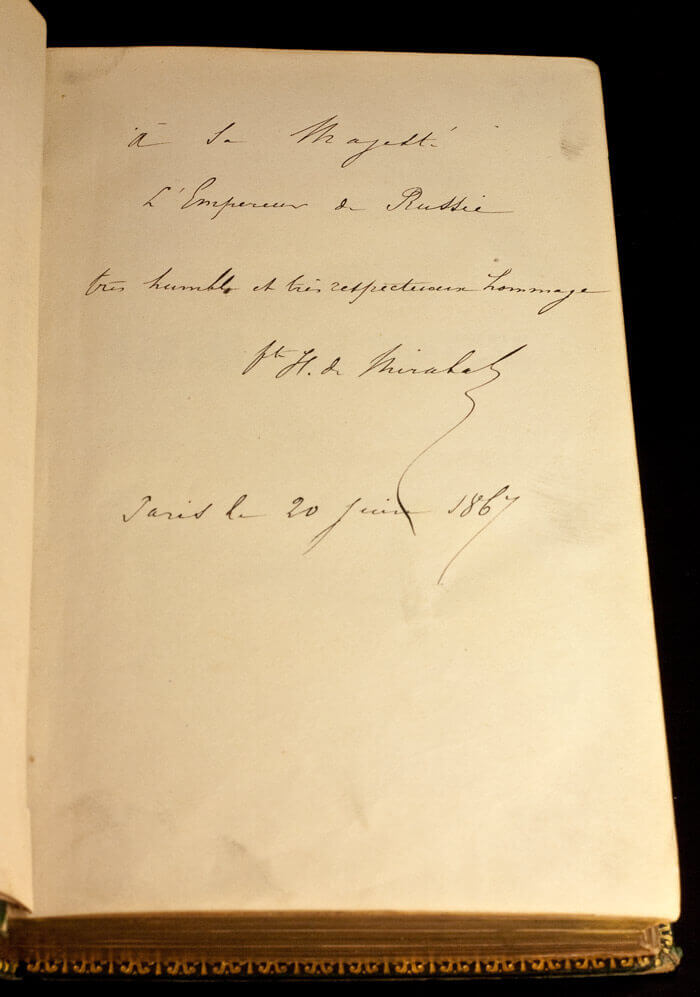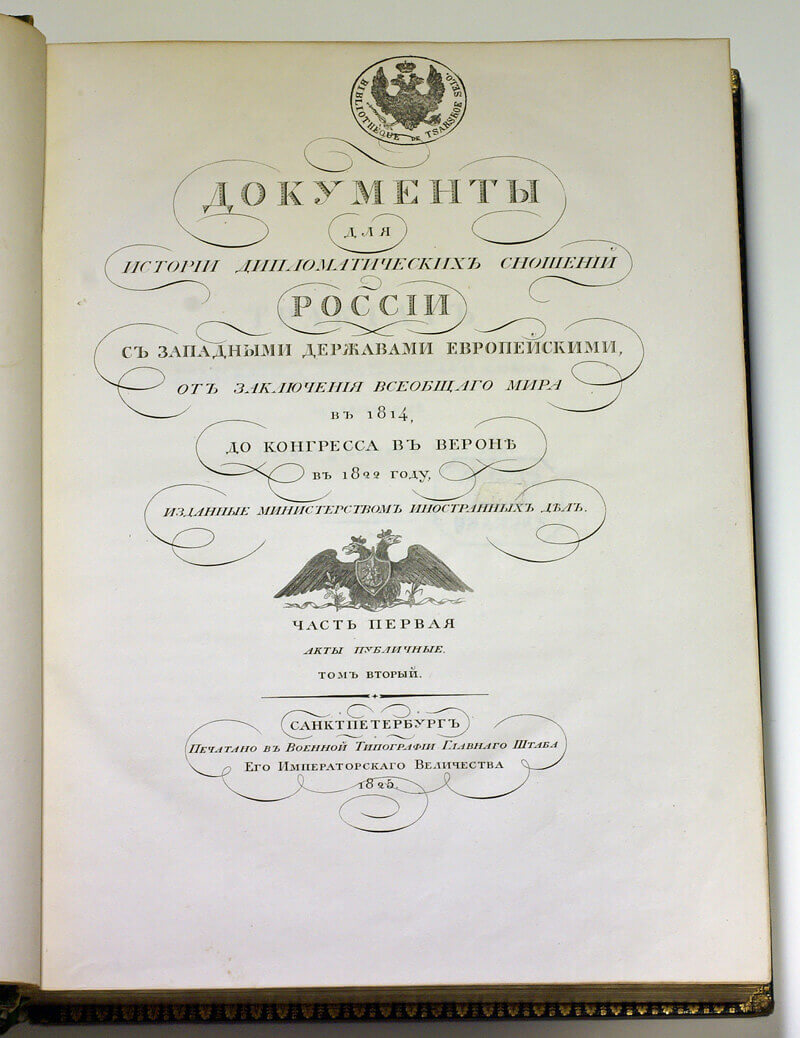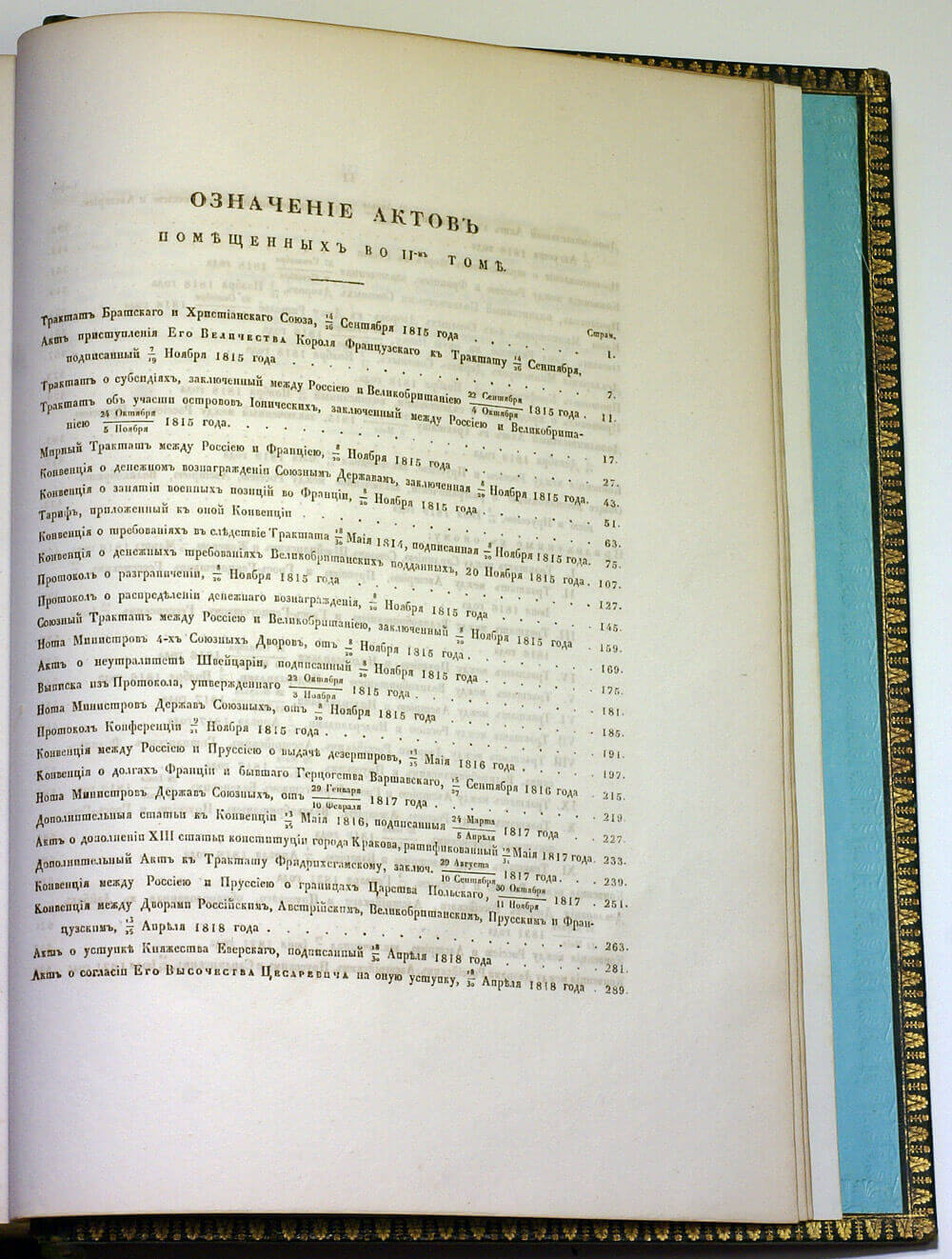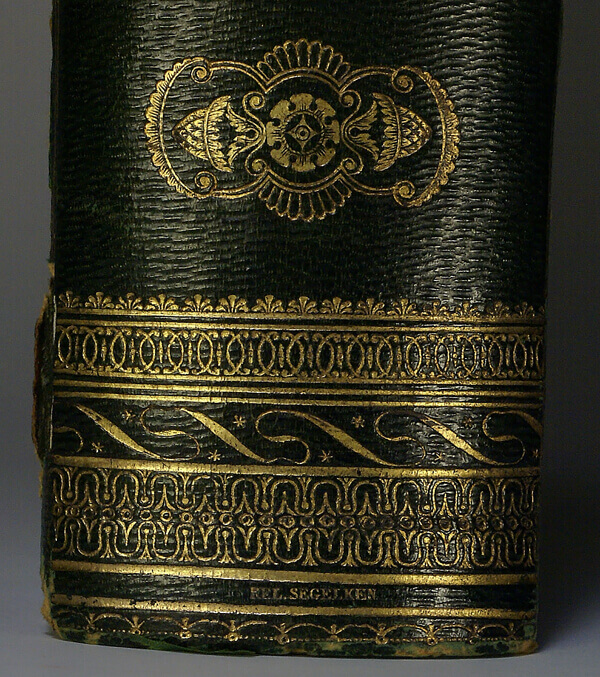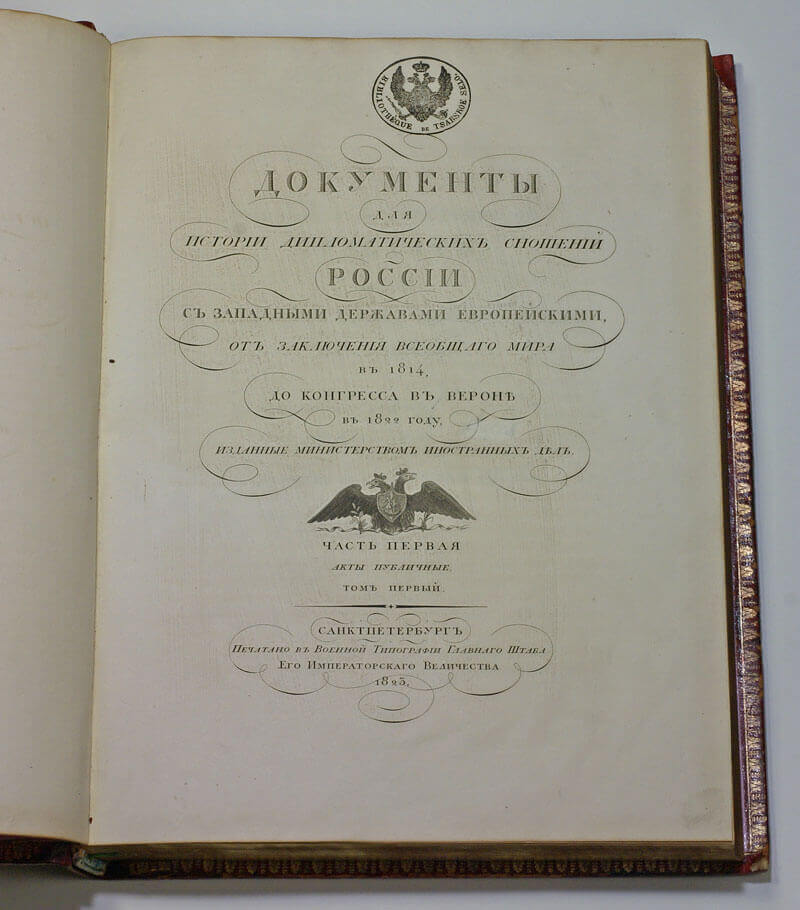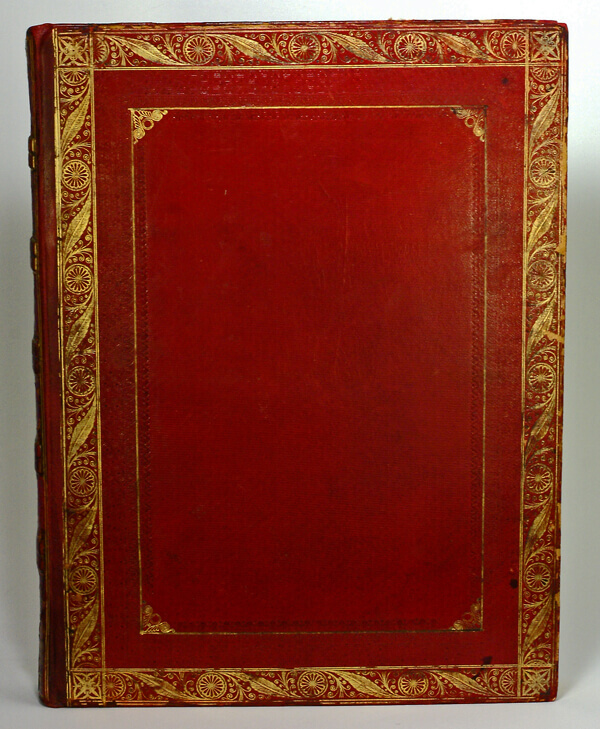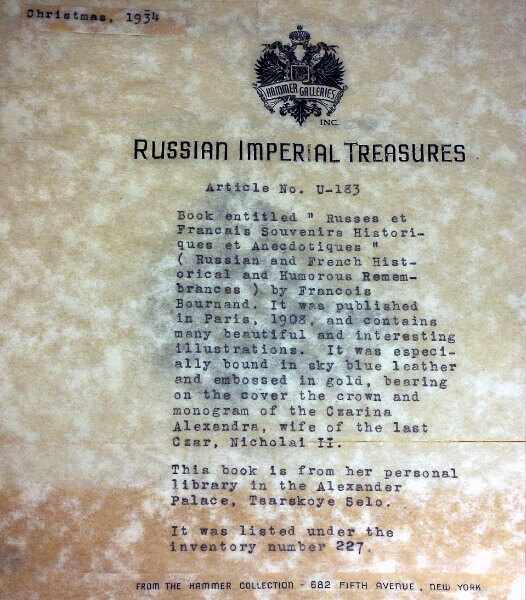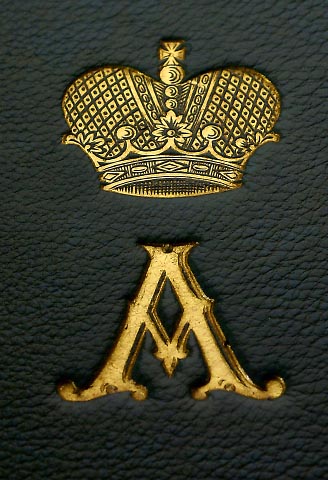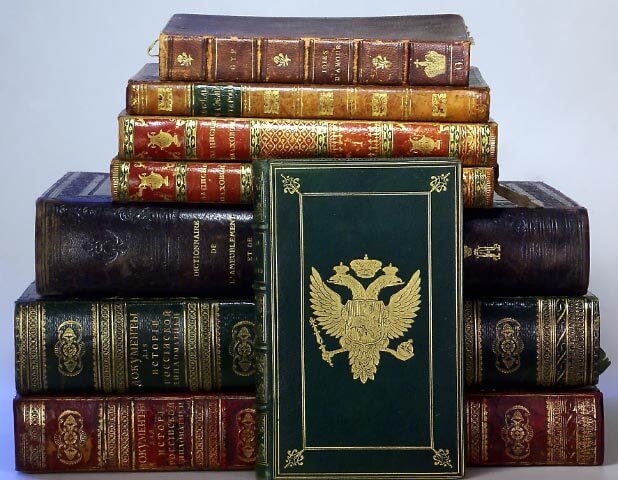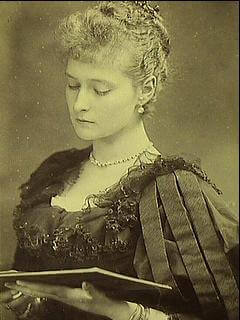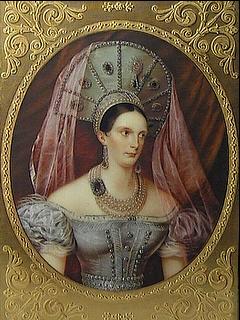A Rare Collection of 13 Antiquarian Russian and European 18th-19th Century Books
From Private Libraries of Members of the Russian Imperial Family – Tsars, Tsarinas, Grand Dukes and Grand Duchesses.
Some of the books in the collection were sold to the West by the Soviet Government in the 1930’s.
Коллекция антикварных Русских и Европейских книг 18-19 века
Из Императорских дворцовых библиотек Русских Царей, Цариц, Великих Князей и Княгинь.
Некоторые книги из этой коллекции были проданы на Запад Советским правительством в 1930-тые годы.
Продажа
All books in the collection have full leather bindings
And most of them are with SUPER EX LIBRIS – a heraldic symbol stamped in gold on the leather covers.
Все книги имеют цельно кожаные переплеты и большинство – супер экслибрисы в золоте.
No. 1
A book from the Pavlovsk Palace library of Empress Maria Feodorovna (1759-1828), wife of Paul I.
“Les Nouvelles Découvertes des Russes, entre l’Asie et l’Amérique avec l’Histoire de la conquete de la Sibérie, & du Commerce des Russes & des Chinois” by William Coxe, Paris, Hotel de Thoe, 1781, text in French, 314 pages, four engraved folding maps: Russian Empire, Russian voyages in the Far East and the Arctic Ocean. 8 x 9 3/4 in. (20,5 x 24,7 cm), mottled calf, gilt tooled spine, marbled edges.
Both covers are embossed in gold with the heraldic super exlibris of Maria. It displays three coats of arms laid on large Russian double-headed eagle: the center one, with a smaller Russian Imperial eagle, is flanked by the coat of arms of the Dukes of Wurttemberg (Maria’s paternal family) and the coat arms of the Dukes of Holstein-Gottorp (her husband’s paternal family). The Imperial eagle is holding a ribbon with the cross of St. Catherine Order in its beaks.
Identical super ex libris is published in “Bookplates and Their Owners in Imperial Russia” by Marguerite Studemeister, 1991, page 26.
Paper label, circa 1900, of the Pavlovsk palace library indicates that the book was still in the Pavlovsk palace during the reign of Nicholas II.
The Pavlovsk palace (20 miles from St. Petersburg) was built by Catherine the Great as a summer residence for her son Grand Duke Paul (later czar Paul I) in 1777. In 1781, Grand Duke Paul and Grand Duchess Maria visited Paris, where numerous objects (including books) were purchased for their newly built palace.
No. 2
Czar Alexander I. An important two volume set from the library in the Tsarskoe Selo (Tsar’s Village) Palace.
A superbly bound set of Russian diplomatic documents 1814-1822, published by the order of the Ministry of Foreign Affairs at the General Staff of His Majesty in St. Petersburg in 1823 (volume I) and 1825 (volume II). “Dokumenty dlia Istorii Diplomaticheskikh Snoshenii Rossii s Zapadnymi Derzhavami Evropeiskimi, ot Zakliucheniia Vseobshego Mira v 1814, do Kongressa v Verone v 1822 gody, izdannye Ministerstvom Inostrannykh Diel”, parallel text in Russian and French; full morocco; both volumes elaborately gilt-tooled in a uniform design, bound in red and green leather respectively; gilt edges.
10 1/4 x 13 3/8 in. (26 x 34 cm), 570 and 720 pages.
Tsarskoe Selo (located 16 miles south of St. Petersburg) is world famed for its elegant palaces and pavilions, landscape parks and ponds. It served as a primary summer residence of the Russian czars. Tsarskoe Selo was also the place for official receptions of Russian nobility and representatives of foreign states, who were visiting Russia with diplomatic missions.
Both covers of the volume II are embossed with the gilt Imperial eagle.
The two volumes contain full texts of historically important diplomatic treaties between Russia and Western European countries which followed the defeat of Napoleonic France, like the 1815 Convention on Imprisonment of Napoleon.
Volume I – 1823
Volume II – 1825
Condition: leaves of both volumes are clean and bright
Both volumes with the stamp ‘Bibliotheque de Tsarskoe Selo’ on the titles in black ink.
Parallel text in Russian and French
This is one of the rare Russian bindings with the name of the binder “SEGELKIN” on the spine.
All edges are gilded
Condition: the spine of the volume I was expertly repaired, some wear on rims.
No. 3
From the library of Czar Alexander I at the Tsarskoe Selo.
‘Zapiski Kniazia Iakova Petrovicha Shakhovskogo Pisannie Im Samim’ (Memoirs of Prince I.P. Shakhovskoy written by himself), Moscow, 1810, 2 volumes, 5 1/8 x 8 5/8 in. (13 x 21,8 cm), tree calf, spines gilt on red and green morocco onlays. Stamps of the Tsarskoe Selo Library to each title.
Memoirs of Prince Iakov Shachovskoy are covering the period of 45 years. From 1719, when he entered the service, till his resignation in 1764. An interesting historical account of the Court life and intrigues written by a highly placed witness. The publisher states in the preface that these are the first historical memoirs written in Russian.
Ex-Soviet Government sale to an American book dealer, summer of 1933; The Plaza Book Auction Corp. public sale in New York, April 12th-13th, 1934, lot No. 412.
No. 4
The following book is probably from the private library of Tsar Nicholas I in the Winter palace.
“Besedi v Glagolemom Staroobradtsy” (Religious), Moscow, 1841, 5 1/8 x 8 1/8 in. (13,2 x 20,7 cm), tree calf, olive green morocco spine label.
Each panel is stamped in gold with the badge of the Order of Saint Andrew (St. Andrew cross laid on the double headed Imperial eagle).
No. 5
A book from the private library of Empress Alexandra Feodorovna (1798-1860), wife of Tsar Nicholas I, in the Winter Palace.
“O Dolzhnosti Presviterov Prikhodskih” (religious subject), 1844, Moscow, text in Church Cyrillic with a dedication to the members of the Imperial family. 5 1/2 x 8 3/4 in. (14 x 22,2 cm), full calf, gilt-tooled borders, olive green morocco spine label, all edges gilt.
Both covers are embossed with the Russian Imperial eagle in gold.
Paper bookplate of the Empress: crowned monogram Cyrillic ‘AF’ between shields with Russian (left) and Prussian (right) eagles. The Empress Alexandra was a Prussian princess by birth.
No. 6
A book from the Novo-Michailovsky Palace library of Grand Duke Michael Nikolaevich (1832-1909), son of Czar Nicholas I, Commander of the Russian artillery.
“Teoria Artillerii” (Theory of Artillery), Russian translation of a French original, published by the Artillery Department of the Ministry of War, St. Petersburg, 1845. 5 5/8 x 9 in. (14,4 x 22,6 cm), 451 pages, contemporary gilt-tooled green morocco, all edges gilt.
The cover is embossed in gold with a double-headed Imperial eagle.
Paper bookplate with Imperial monogram of Grand Duke Michael.
Paper label of the Novo-Michailovsky palace.
The New Michael Palace (Novo-Michailovsky) in St. Petersburg was built in 1825 as a residence for Grand Duke Michael Pavlovich (1798-1849), the youngest son of Paul I. In 1898 the palace was converted to house the Russian Museum of Emperor Alexander III.
No. 7
A book from the Marble Palace library of Grand Duke Constantine Nikolaevich (1827-1892), son of Nicholas I, Commander of the Russian Navy.
“Ob Ykazanii Pyti v Tsarstvo Nebesnoe” (religious subject), in Church Cyrillic, Moscow, 1850. 6 3/4 x 9 in. (17 x 22,7 cm), full calf, gilt border, all edges gilt.
Both covers are with embossed in gold Imperial eagle.
Paper bookplate with Imperial monogram of Grand Duke Constantine.
A later inscription in ink ‘From the library of the Marble palace 1925’.
No. 8
A book from the library of Grand Duke Constantine Nikolaevich in the Pavlovsk palace.
“Kniga Bogougodnikh Trudov Prepodobnogo Otsa Nashego Efrema Surina” (religious subject), in Church Cyrillic with dedication to the members of the Imperial family, Moscow, 1840, two volumes bound together. 6 1/4 x 9 5/8 in. (15,7 x 24,5 cm), contemporary full calf, green morocco spine labels, gilt border, gilt edges.
Both covers are decorated with the arms of the Pavlovsk palace: the badge of the Maltese Cross Order laid on the Russian Imperial eagle. Emperor Paul I, to whom the palace was given by his mother Catherine II, accepted the title of Grandmaster of the Order and added the cross to the Russian eagle in December 1798, after the island of Malta was captured by the French forces. In the 19th century, Pavlovsk belonged to Grand Duke Constantine Nikolaevich and later to his son – Grand Duke Constantine Constantinovich.
Paper bookplate with Imperial monogram of Grand Duke Constantine.
No. 9
Czar Alexander II. A book from the church library of the Nikolaevsky Palace
A description of the religious service during the coronation of Czar Alexander II on August 26, 1856,
Published by Holy Sinod (the highest church authority in the Imperial Russia), Moscow, 1856. Full calf, gilt border, all edges gilt. 5 1/4 x 8 3/8 in. (13,3 x 21,5 cm).
Both covers with embossed in gold Imperial eagle.
Stamp of the Nikolaevsky Palace Church
No. 10
Presentation copy inscribed by the author to Czar Alexander II
Specially bound for the czar in fine leather with embossed gold double headed Imperial eagle on the cover
H. de Mirabal. Manuel Des Courses (book on horse racing), Paris, 1867, 4 4/8 x 7 1/16 in. (11,6 x 18 cm).
Full green morocco, gilt tooled spine and gilded edges.
The presentation inscription is dated June 20, 1867.
No. 11
A book from the private library of Empress Alexandra Feodorovna (1872-1918), wife of Nicholas II, in the Alexander Palace.
Francois Bournand “Russes & Francais Souvenirs Historiques et Anecdotiques 1051-1897”, Paris, 1898, 295 pages, sky-blue morocco, doublures of white moire silk, gilt edges. 7 1/2 x 10 5/8 in. (19 x 27 cm).
The front cover is boldly stamped with cipher of Empress Alexandra: ‘A’ under a large Russian Imperial crown.
Comes with a receipt, dated ‘Christmas, 1934’, from the Hammer Galleries stating that the book is from the personal library of the empress in the Alexander Palace of Tsarskoe Selo.
No. 12
A book from the library of Grand Duchess Olga Alexandrovna (1882-1960), daughter of Alexander III, sister of Nicholas II.
Joiles D’Amour by GYP, Paris, 1897, 367 pages, brown grain morocco. 4 3/8 x 7 in. (11,3 x 18 cm).
The cover is embossed in gold with a crowned facsimile in French:
Princesse Olga.
The spine with a monogram ‘O.’ under a large Imperial crown.
All edges are gilded.
No. 13
From the library of Grand Duke Paul Alexandrovich.
“Dictionnaire de L’Ameublement et de La Decoration”, volume II, Paris, circa 1890, 9 1/8 x 12 1/4 in. (23 x 31 cm), burgundy morocco.
The dictionary contains description and 955 illustrations (some in color) of various decorative objects, architectural ornaments, furniture, tablewares, tapestries, objects d’art, etc., beginning with the 13th century.
Cipher of Grand Duke Paul is stamped in gold on the spine. Similar ciphers are incorporated into the blind impressed ornaments on the covers at the corners of central rectangular plaques.
The cipher is in the form of interlaced Cyrillic ‘П’ and ‘A’ under the Imperial crown.
Library paper label is decorated with the monogram of Grand Duke Paul: four Cyrillic letters ‘П’ forming a cross, with four Imperial crowns between the arms of the cross.
Photograph circa 1898, first from the left is Grand Duke Paul.
Grand Duke Paul Alexandrovich, the sixth and the last son of Alexander II, Major-General and Commander in Chief of the Life Guard Horse regiment, was married to princess Alexandra of Greece (died in 1891). In January 1919, the Grand Duke was executed in St. Peter and Paul Fortress, together with other members of the Romanov family, who stayed in St. Petersburg.

